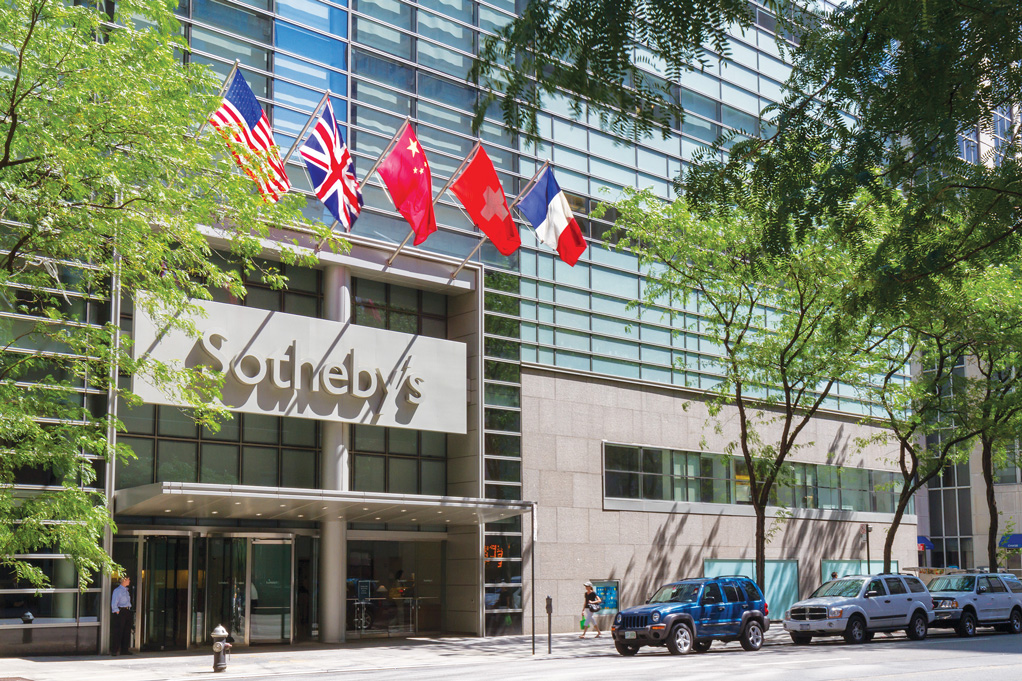The global art market has long been dominated by Western artists and creators, but over the last 20 years there has been a significant growth in the sales of art by Chinese citizens or artists of Chinese descent. In 2022, the country’s art market accounted for 17% of global sales, ranking third in the world after the US and the UK.
The rapid creation of wealth within the country itself is a major reason behind the growth in sales, and China’s collectors are influencing the increase in value and sales of art, including that of Chinese origin. In the first half of 2023, mainland Chinese collectors had the highest median spend of any in the world, at $241,000, according to the Art Basel and UBS Survey of Global Collecting.
Measuring and tracking the value of high-end art has been commonplace for many years, but for the most part the available metrics and indices have not included works from Chinese artists. In fact, we created a number of indices for impressionist and contemporary art including that of British, Latin American or European origin at the turn of the century. But with the proliferation my colleagues and I have seen over the last two decades and more, there is now an opportunity to do the same for the Eastern world, and with this comes a glimpse at the relationship between Chinese art and the country’s wider economic development.
Motivations
As with many endeavors such as this, the recent production of the Chinese art indices actually came about as an attempt to prove someone wrong. I had jokingly been accused of bias towards Western art by a friend, who was convinced that the Chinese market was now at a stage where it warranted just as much attention. At the time we started the original indices, there were simply not enough transactions to construct a standalone index for Chinese art, but the explosion in sales numbers over the last 20 years has proved to be significant enough to warrant a reconsideration.
The Chinese indices, first published last year, are designed to track the fluctuations in various segments of the Chinese art market, specifically pieces produced by Chinese artists or artists of Chinese descent, with an overall index that gives a view on the market as a whole, as well as others, such as the Ink Painting Index that sheds more light on the traditional Chinese art market and how it is doing compared to the whole. For example, over the last 20 years, the Chinese art segment has outperformed the traditional market indices such as the contemporary art market or the impressionist market, which are mostly made up of artists living in Europe and the US.
There are a lot of interesting segments that make up the Chinese art market, and we have defined several sections that have become sub-indices. The first is for Chinese ink paintings or what can also be seen as more traditional art, while another sub-index is focused on oil paintings, which is a more recent introduction from overseas. But it is also important to categorize or define the art according to time periods. The section we refer to as ‘Modern’ is actually art produced prior to 1911, and then there is the ‘Contemporary’ art index which are all pieces produced after that date.
There are obviously more categorizations possible, such as landscape or portrait paintings, and these are things that can be added in the future. And we are also producing individual artist indices for some of the more well-known artists, for example, we have an index for the late Zao Wou-Ki (赵无极), and there are opportunities to do more, especially because there are a number of quite liquid artists in China, and this would also enable us to compare them in more detail to well-known international artists.
Producing the Indices
The key to the usefulness of the indices is making sure that the data behind them is both easily accessible and of uniform quality. This transparency and consistency should mean that others could, if they so wish, reproduce the indices using the same methodology, which in turn applies a level of legitimacy to the results.
Because of this requirement, creating the indices was first a process of reducing down the number of data sources, and the data set has been drawn from the three major international auction houses, Sotheby’s, Christie’s and Philips, covering six major markets, Beijing, Shanghai, Hong Kong, Singapore, London and New York. But this does mean that the indices only cover the very top end of the market.
There are probably hundreds of thousands of active artists in China or of Chinese descent, but it is difficult to cover all of them because few will have their pieces sold at auction, let alone by the major international auction houses. There is, however, a fairly active auction market in China, with hundreds, if not more, auction houses selling Chinese art. But there are limitations to the available data. Many of the houses are relatively new and there is something of a lack of consistency between the pricing standards and data sets they release, making it difficult to compare and contrast the results.
Assigning value to art can be a complex process. On the surface, it is the role of professionals at an auction house, who provide value estimates when accepting a piece for auction. But underlying this there are several economic, cultural and other factors that have an influence on valuations or that drive the market.
First of all, there is the impact of the overall economy at the time of sale. Much of the demand for art comes from wealthy individuals and institutions and that demand depends on the health of the economy as a whole. If global wealth creation is going well and the stock markets are performing, then that will have a knock-on positive impact on the value of art.
Another factor is interest rates because art as an asset does not inherently produce dividends or interest. As a tool of wealth creation, if it is possible to earn a high return via the stock market or by putting money in the bank with a high interest rate, you are functionally giving up that opportunity by purchasing a piece of art instead. So certain interest rate changes can have a negative impact on the market and dampen enthusiasm.
Having said that, it also depends on preference. A lot of Chinese collectors, especially those in the older generations, have a preference for Chinese ink paintings, whereas younger collectors prefer oil paintings. So demand can rise or fall in relation to personal preference.
Results
It should be noted that we are in the early stages of the Chinese indices, having only released them last year, but there are several trends that have already become clear. One of the major trends we have seen as a result of producing the indices is that prices and the collection of Chinese art are closely linked to the performance of the Chinese economy, and the data we have falls into three periods that demonstrates this quite clearly. The first period, from 2002 to 2007, sits before the Global Financial Crisis in 2008, and was a period in which both the economy and the art market experienced a boom, with the latter growing almost eight-fold during that time.
The second period spans 2008 and 2013, and was mostly a period of recovery. After 2008, the art market dropped by around 26% but in the following years saw a reasonable level of growth—around 9% per year—in order to get back to the level it was at pre-crisis. The final period, post-2014, has seen the market basically zigzagging, with peaks and troughs particularly evident in the serious market correction during the pandemic.
In terms of specific market sections, both ink and oil paintings have done quite well, with an 8.8% and 11.5% return, respectively, over the lifespan of the indices. And there are some indications, and the data here needs to be confirmed, that the price of Chinese ink paintings are highly-correlated with the state of the Chinese real estate market. There is anecdotal evidence that the ink paintings have a large following among Chinese real estate developers, as well as some other, relatively old collectors.
Overall, however, it is hard to create an accurate image of a typical buyer profile, and this is not just the case for those purchasing Chinese art, because even internationally, many buyers choose to stay anonymous. There is some evidence to suggest that the collectors of Chinese art are both Chinese and international in origin, and some specific Chinese artists, again, such as Zou Wou-Ki, quite clearly have a large international following. But then there are also many successful Chinese entrepreneurs who are pursuing Chinese collections.
Price volatility is quite hard to measure for several reasons. The prices for higher-end pieces of art can generally range from tens of thousands of dollars, all the way up to $200 million. Outside of the wider economic situation, we can also see variations in pricing due to where a piece is auctioned, and even down to whether it is sold during a daytime or evening auction.
In terms of holding periods, the typical ownership span for a piece of Western art rests somewhere between 15 and 25 years, but from the data we have seen for Chinese art, the average is much shorter, with many cases where people have held the art for just one or two years. There are even extreme cases where a collector purchased a piece in the spring auction and then sold it in the fall of the same year. It is unclear exactly why this happens, but there is a greater appetite for risk in emerging economies and therefore the shorter holding periods may be related to the early stage that the Chinese economy is in. It would be reasonable to expect that as the economy matures, the market will mature with it.

Conclusion
Over the past 20 years, the market for Chinese art has grown dramatically from quite a low starting point, but the pandemic caused a substantial correction, and with any illiquid asset after such an event, it usually takes time to find its footing again. Because of this, the market will take some time to return to robust growth, and this is something worth watching over the next few years.
In the coming years, the Chinese art market will likely be driven by the wealth created in the high-tech sector, thanks to its rapid development and large number of entrepreneurs, many of whom will become collectors down the road. More widely, the expansion of many of the market segments will be driven by international wealth creation and the dynamics of the overall world economy.
There are quite a lot of opportunities for expanding the collection of indices in the future. There are very few, if any, indices also looking at the China market, and that also goes for a number of other countries, so opportunities lie in creating similar Indian or Japanese lists, for example. Other options may be in the creation of NFT-related indices, but that requires more data and a longevity for NFTs that hasn’t yet become apparent.
Outside of the art itself, the indices can offer an interesting insight into the state of the Chinese economy itself, as well as the creation of Chinese wealth, not just in terms of the money generated in China, but also more broadly as money generated by people of Chinese descent. As China is continuing to play an important role on the global stage, it could be pertinent to keep an eye on the art market to gauge its success.
By Mei Jianping, Professor of Finance, Cheung Kong Graduate School of Business

















